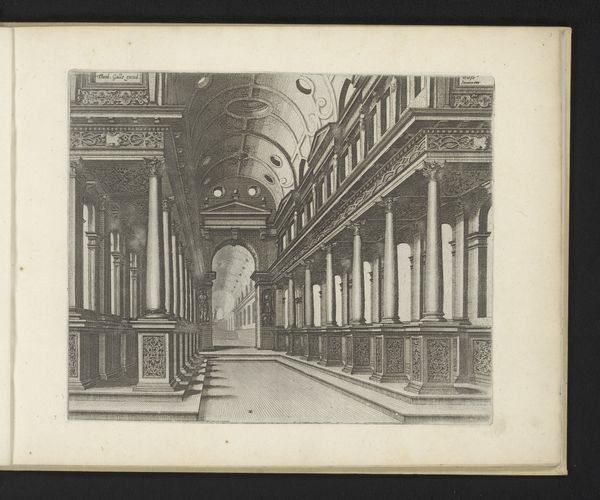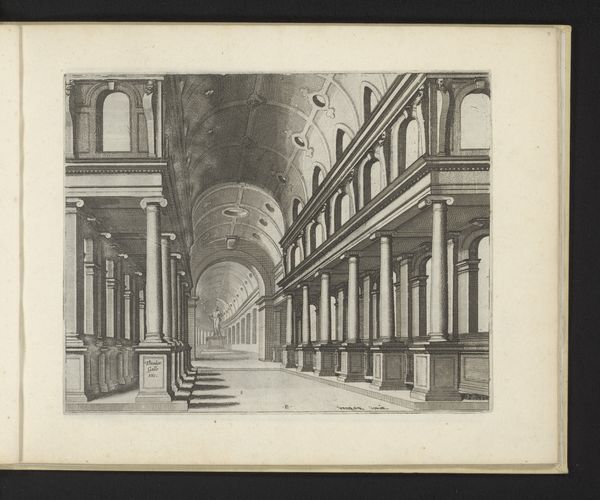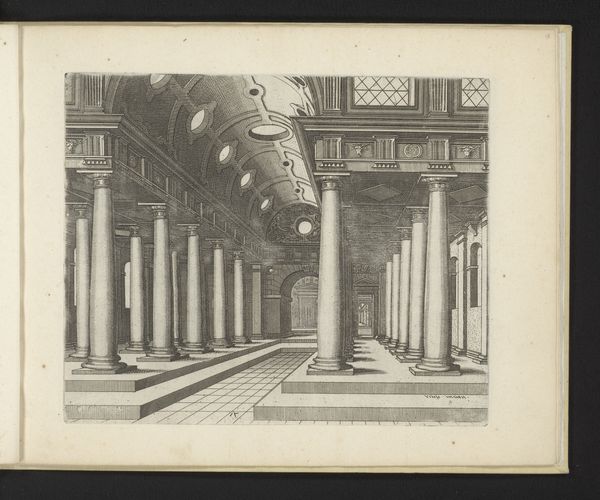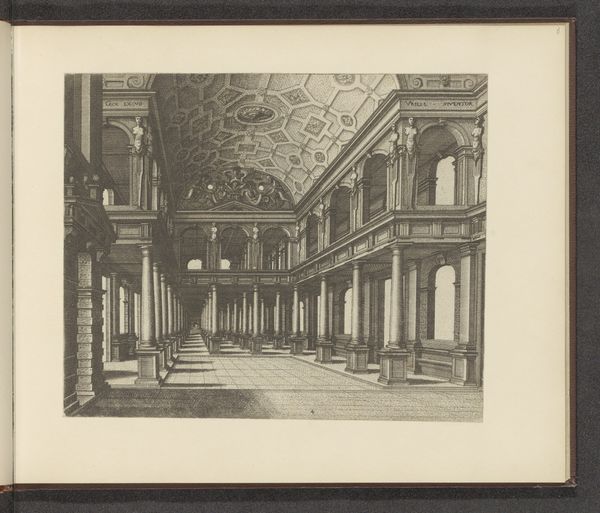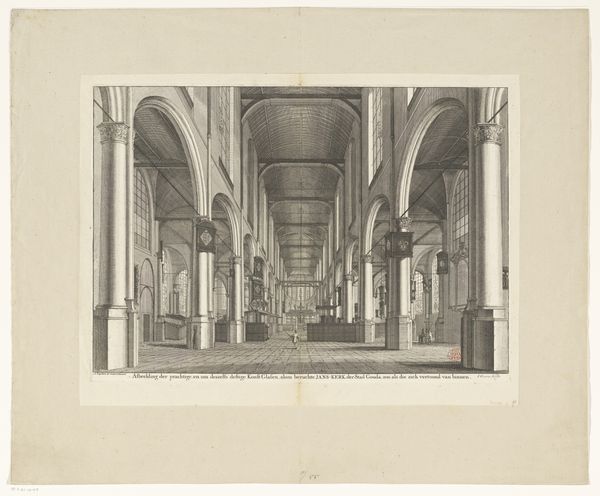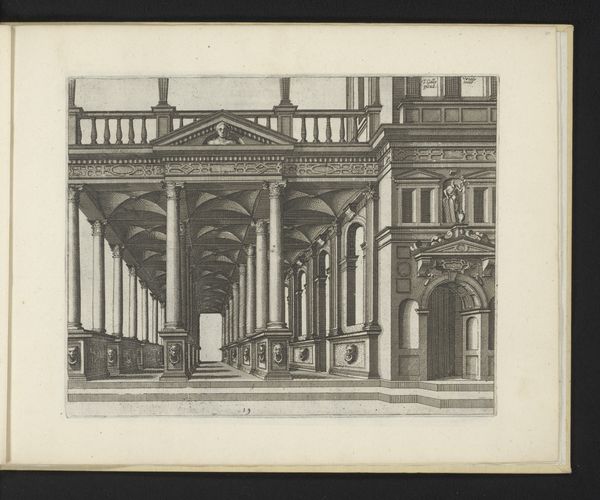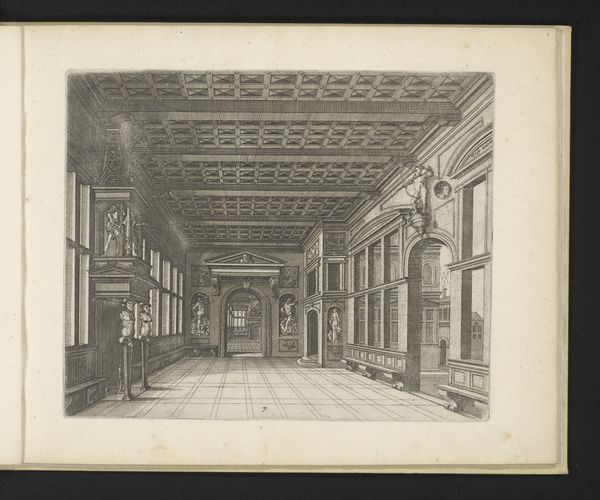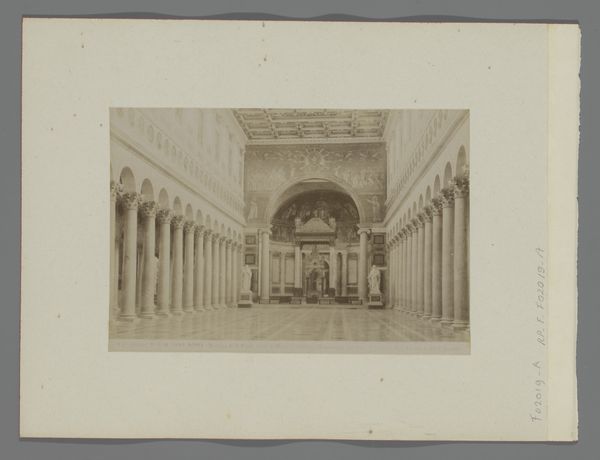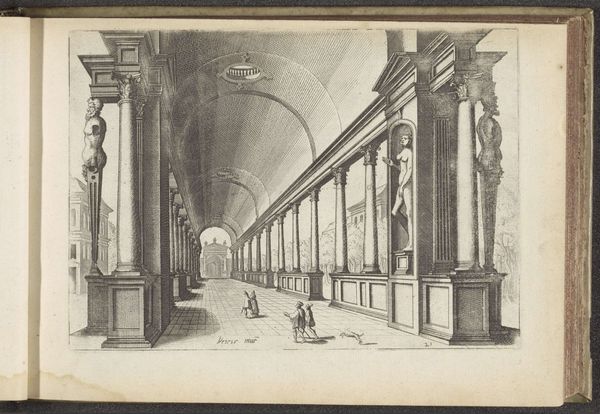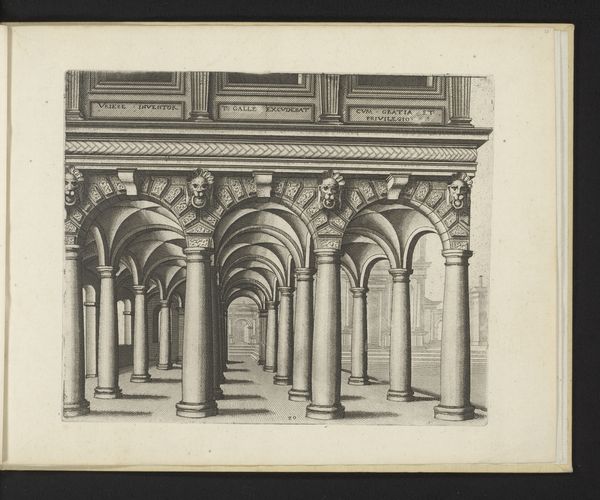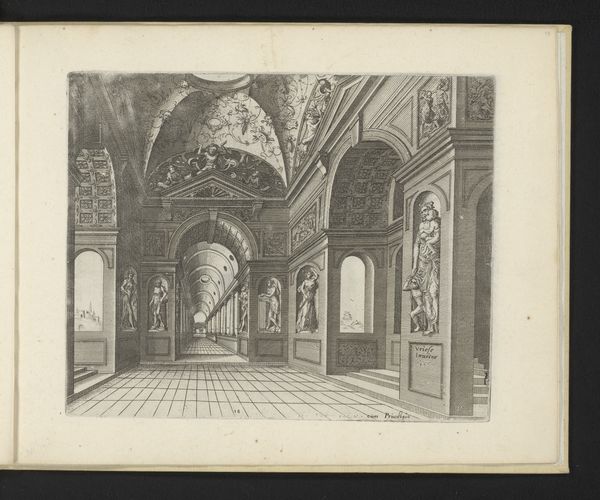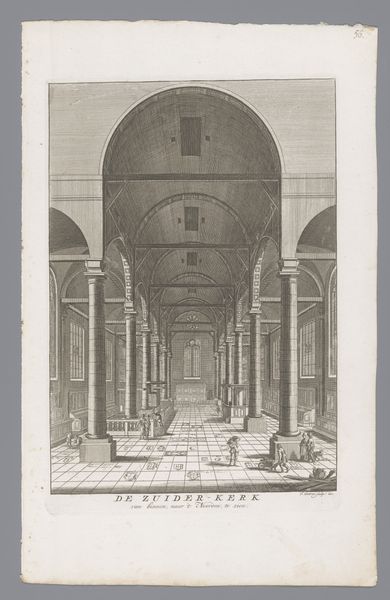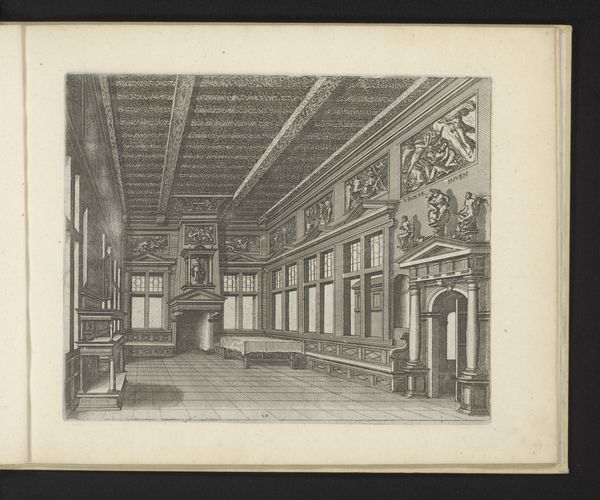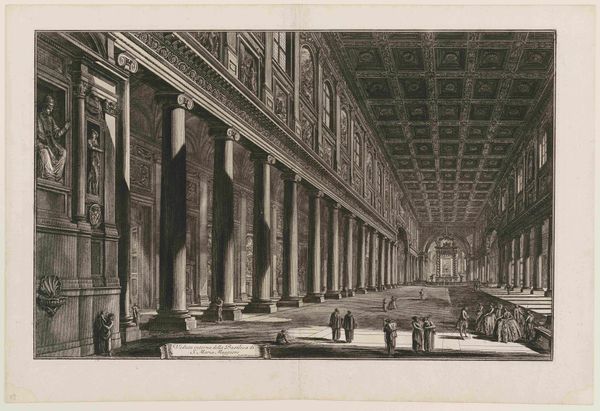
Interieur van een kerk met zuilen van de Toscaanse orde 1601
0:00
0:00
johannesoflucasvandoetechum
Rijksmuseum
print, engraving, architecture
# print
#
perspective
#
geometric
#
line
#
italian-renaissance
#
engraving
#
architecture
Dimensions: height 210 mm, width 258 mm
Copyright: Rijks Museum: Open Domain
Editor: Here we have "Interior of a Church with Columns of the Tuscan Order," a 1601 engraving by Johannes or Lucas van Doetechum. The perspective is quite striking, almost dizzying. What aspects of this print do you find most compelling? Curator: For me, it's the intersection of craft and ideology embedded in this piece. The print itself is a product of skilled labor; consider the meticulousness required for such detailed engraving. And these depictions of ideal spaces mirrored the aspirational architecture of the Italian Renaissance. Editor: So, the physical making of the artwork connects to larger societal forces? Curator: Precisely! Look at the geometry and order represented. They reflect the social and religious structures of the time. The church sought to create spaces reflecting divine order, influencing not only spiritual, but also the temporal experience. Editor: It's amazing to think of an engraving as a kind of documentation of cultural aspirations. Did the accessibility of printmaking play a role here? Curator: Absolutely. Prints allowed wider dissemination of these architectural ideas. The 'means of production,' engraving, facilitated distribution to broader audiences. In contrast to unique, expensive paintings accessible to an elite few. Printmaking allowed middle-class access. Editor: It's interesting how a focus on the materiality of the print, its process, reveals these insights about cultural values. Curator: Indeed. By studying the physical artifact – the paper, the ink, the lines – we decode societal forces embedded in its creation. It shifts our perception of something 'devotional' to something actively consumed and propagated, demystifying the Church. Editor: This has definitely given me a different lens through which to appreciate early modern prints and think about art history! Curator: Yes, seeing art as both an object and as evidence of the socio-economic context makes it far more engaging.
Comments
No comments
Be the first to comment and join the conversation on the ultimate creative platform.
